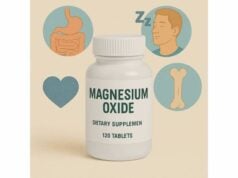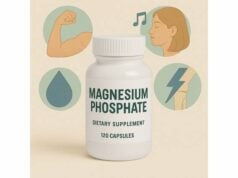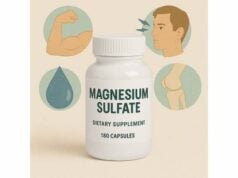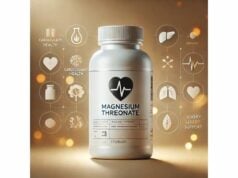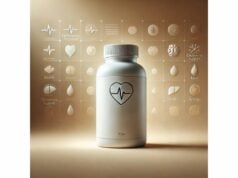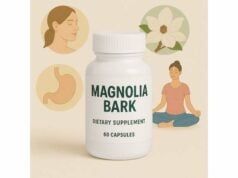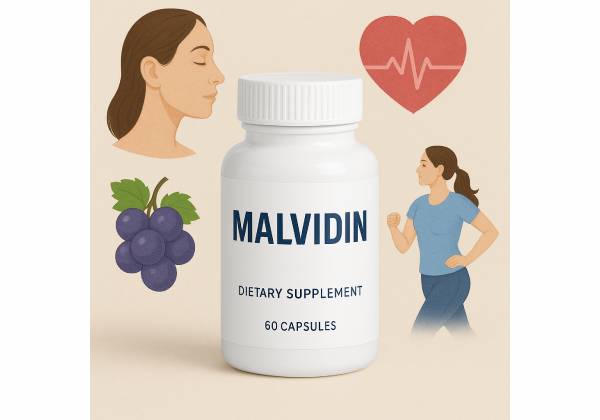
Malvidin is the deep-violet anthocyanidin that gives many red and blue fruits their jewel-toned color—especially red grapes, blueberries, and bilberries. In plants, malvidin and its glycosides (such as malvidin-3-O-glucoside) act as pigments and antioxidants. In people, they are best known as members of the anthocyanin family, a class of polyphenols studied for vascular, metabolic, and skin-supportive effects. While malvidin is not a “miracle pill,” it contributes to the benefits seen with anthocyanin-rich foods and standardized berry or grape skin extracts. The science points to several plausible actions: modulation of endothelial nitric-oxide signaling, quenching of reactive species, and crosstalk with the gut microbiome; however, bioavailability is limited, and effects depend on dose, diet, and the specific extract you choose. This guide explains what malvidin is, what current research does and does not show, how to select and use malvidin-dominant anthocyanin products sensibly, and when to be cautious. You will also find practical dosing ranges used in clinical anthocyanin trials, plus troubleshooting tips to improve tolerance and outcomes.
Top Highlights
- Supports endothelial function and antioxidant defenses when taken as part of anthocyanin-rich extracts.
- Typical supplemental range: 80–320 mg/day total anthocyanins (malvidin-dominant formulas), with meals.
- Safety caveat: may cause mild gastrointestinal upset; separate from iron or some medications if directed by your clinician.
- Avoid high-dose supplements if pregnant, on anticoagulants, or allergic to grapes/berries.
Table of Contents
- What is malvidin and how it works
- Does malvidin deliver real benefits?
- How to use malvidin correctly
- How much malvidin per day?
- Common mistakes and troubleshooting
- Side effects, interactions, and safety
What is malvidin and how it works
Malvidin is an anthocyanidin—the aglycone (core) form of certain anthocyanins—distinguished by two methoxy groups on its B-ring. In nature it most often appears as glycosides, especially malvidin-3-O-glucoside (Mv-3-glc), which is the dominant anthocyanin in red wine and many grape skins. These pigments are water-soluble and pH-sensitive: they appear bright red in acidic environments, shift toward purple around neutral pH, and become bluish at higher pH. Plants leverage this chemistry for signaling and UV protection; winemakers prize malvidin derivatives for color intensity and stability.
When you eat malvidin-rich foods or take a malvidin-dominant extract, several things happen:
- Absorption is modest and fleeting. Intact anthocyanins reach the bloodstream at low micromolar to nanomolar levels and are cleared quickly. A small portion of Mv-3-glc can appear in plasma and urine soon after consumption, but direct exposure is brief.
- Metabolism matters more than you think. Most of the biological “work” is performed by metabolites generated via gut microbiota and phase-II enzymes. For malvidin, a notable downstream metabolite is syringic acid, which can persist longer and interact with vascular and inflammatory pathways.
- Targets are distributed. Anthocyanins and their metabolites modulate redox signaling, influence endothelial nitric-oxide availability, and may dampen adhesion molecule expression on the vascular lining. In models, Mv-3-glc reduces E-selectin and other pro-adhesive cues, which supports healthy blood-flow dynamics.
- Color chemistry has practical use. Beyond health research, malvidin’s copigmentation behavior (stacking with other phenolics) stabilizes color in beverages and foods. In your body, similar non-covalent interactions can influence how polyphenols bind proteins and membranes.
A useful mental model is this: malvidin is a signal-modulating pigment. You are unlikely to maintain high blood levels of intact Mv-3-glc, but repeated intake of malvidin-rich anthocyanins feeds a pool of phenolic metabolites that can nudge inflammatory and vascular tone in favorable directions—especially alongside a fruit- and vegetable-forward diet.
Does malvidin deliver real benefits?
The strongest human data come from anthocyanin-rich foods and standardized extracts, not isolated malvidin alone. Because malvidin dominates the anthocyanin profile in grapes and many red wines, it likely contributes substantially to the following outcomes:
Vascular function (endothelial health)
Randomized trials with blueberries and purified anthocyanins show acute and short-term improvements in flow-mediated dilation (FMD), a sensitive measure of endothelial function. These effects typically appear within hours of intake and can persist with daily consumption across weeks. Mechanistically, anthocyanin metabolites enhance nitric-oxide signaling and temper oxidative enzyme activity. While individual responses vary, these improvements are consistent across different anthocyanin sources, implying that malvidin participates as part of the broader anthocyanin “team.”
Cardiometabolic markers
Across controlled studies, anthocyanin supplementation can produce small, directionally favorable shifts in lipid profiles (for example, modest LDL reductions) and post-prandial handling of glucose in select populations. The magnitude is usually modest compared with medications or wholesale dietary changes. Think of anthocyanins as adjuncts to a heart-smart pattern rather than stand-alone therapies.
Skin and photoprotection (supportive evidence)
By quenching reactive species and dampening inflammatory signaling after UV exposure, anthocyanins may help preserve skin tone and elasticity over time when combined with sunscreen and healthy habits. Direct malvidin-only trials are limited, but grape skin extracts rich in malvidin share similar antioxidant and anti-glycation profiles in preclinical work.
Neurovascular and eye comfort (early-stage)
Anthocyanins can cross the blood–retina barrier in small amounts, and some users report reduced eye strain with berry extracts. Controlled data specific to malvidin are preliminary; benefits likely reflect cumulative anthocyanin actions rather than a malvidin-only effect.
What not to expect
Malvidin is not a weight-loss agent, glucose-lowering drug, or cure for hypertension. Benefits are incremental, most visible in sensitive biomarkers (like FMD) and best realized alongside diet, movement, sleep, and standard care.
Bottom line: If your goal is better vascular responsiveness, adding a malvidin-dominant anthocyanin extract (or simply eating more anthocyanin-rich berries and grapes) is reasonable. Expect subtle improvements that accumulate with consistent intake. Track outcomes that matter—blood pressure logs, lipid panels, and, when available, endothelial function measures—to see if it is helpful for you.
How to use malvidin correctly
Because supplements list total anthocyanins rather than malvidin grams, practical use revolves around choosing the right kind of extract, timing it well, and pairing it with the rest of your routine.
Choose a sensible form
- Grape skin extract (standardized anthocyanins): Look for labels that disclose percent anthocyanins and, ideally, a profile showing malvidin and related glycosides.
- Berry concentrates (blueberry, bilberry, blackcurrant): These often contain a balanced anthocyanin spectrum (delphinidin, cyanidin, malvidin, etc.). Malvidin content varies by species and cultivar.
- Whole foods: A cup of blueberries or a serving of red/purple grapes adds anthocyanins plus fiber, minerals, and other polyphenols. Whole foods consistently deliver benefits in observational and interventional research.
Dose with context
- With meals: Take capsules with food to improve tolerance and mirror how polyphenols are normally consumed.
- Split doses: If using 160–320 mg/day total anthocyanins, split morning and evening to stabilize metabolite exposure.
- Cycle intelligently: Consider everyday use during high-stress or high-exposure periods (e.g., heavy training blocks, long travel, summer sun), and reassess every 8–12 weeks.
Stacking and combinations
- Diet first: Anthocyanins work best within a diet rich in vegetables, legumes, nuts, and fish. The background diet shapes your microbiome—the engine that turns malvidin into bioactive metabolites like syringic acid.
- With vitamin C: Reasonable—vitamin C helps recycle antioxidant networks.
- With nitrate-rich plants (beet, leafy greens): Can be complementary for endothelial support; keep sodium modest for blood pressure.
- With resveratrol or quercetin: Fine in principle, but avoid megadoses; more is not always better.
How to tell it is working
- Subjective: Better exercise recovery, less flushing with exertion, or improved hand/foot warmth in cold might be noticed by some.
- Objective: FMD (if measured), small LDL improvements over 8–12 weeks, steadier post-meal glucose excursions in mixed meals when combined with fiber and protein. Keep expectations realistic.
Quality checklist
- Clear standardization (e.g., “provides 160 mg anthocyanins per capsule”)
- Lot/batch numbers and third-party testing
- Sensible excipients; transparent botanical source (e.g., “Vitis vinifera grape skin”)
Who benefits most
- Individuals seeking vascular support with borderline cardiometabolic risk factors.
- People who prefer food-first approaches and want a standardized backup on days their produce intake is low.
How much malvidin per day?
There is no official daily value for malvidin, and human studies rarely isolate it from the broader anthocyanin family. Practical ranges come from trials using anthocyanin-rich foods or purified anthocyanin mixtures where malvidin is a key component, especially in grape-derived products.
Practical adult ranges (total anthocyanins)
- Everyday support: 80–160 mg/day, with meals. This aligns with lower doses used in berry studies and is a reasonable starting point for most healthy adults.
- Targeted endothelial support: 160–320 mg/day, often split into two doses. Several randomized trials observing FMD improvements land in this range when you convert food portions to anthocyanin content or use purified capsules.
- Food equivalents (approximate): One cup (150–160 g) of blueberries typically delivers 100–200 mg anthocyanins, depending on variety and storage. A serving of red/purple grapes contributes additional anthocyanins with malvidin dominant in skins.
Older adults
- Start low (80–160 mg/day), increase gradually if well tolerated, and monitor any medications that require spacing (iron, some antibiotics, thyroid hormone) per clinical advice.
Athletes and active individuals
- Consider 160–320 mg/day during heavy blocks for vascular recovery support, taken with mixed meals. Keep an eye on overall carbohydrate periodization; supplements do not replace fueling.
Pediatric use
- Emphasize whole foods. Anthocyanin supplements are rarely necessary for children; discuss any use with a clinician.
Pregnancy and lactation
- Anthocyanins from foods are staples of healthy diets. Concentrated capsules are less studied; default to whole foods unless your clinician advises otherwise.
Timing tips
- Morning + evening split helps maintain metabolite exposure.
- On training days, one dose can be taken within a mixed pre- or post-exercise meal.
How long to try
- Allow 8–12 weeks to judge lipid and vascular markers; acute vascular effects may occur within hours, but durable change depends on consistent intake and lifestyle.
Do not chase gram-level doses. Absorption plateaus, and higher loads may simply feed colonic metabolism without additional systemic benefit. The sweet spot is the low hundreds of milligrams of total anthocyanins per day.
Common mistakes and troubleshooting
Mistake 1: Expecting drug-like results from a pigment.
Anthocyanins—including malvidin—are supportive compounds. They can nudge endothelial function and oxidative tone, but they do not replace antihypertensives, statins, or glucose-lowering medications when those are indicated.
Mistake 2: Ignoring bioavailability.
Most intact malvidin glycosides pass quickly; benefits hinge on metabolites produced by your microbiome. If your diet is low in fiber and polyphenols, you may generate a weaker metabolite profile. Fix the base: vegetables, legumes, nuts, whole grains, and fermented foods.
Mistake 3: Buying non-standardized products.
“Grape extract” can mean many things. Without a stated anthocyanin content, servings may be too low to matter. Choose products listing mg of anthocyanins per dose and the botanical source (e.g., grape skin vs. seed; seeds are rich in proanthocyanidins but low in malvidin).
Mistake 4: Overlooking interactions with iron or certain medications.
Polyphenols can bind iron and some drugs in the gut. If you take iron, thyroid hormone, or select antibiotics, separate anthocyanin supplements by several hours as advised by your clinician or pharmacist.
Mistake 5: Using alcohol as your delivery system.
Red wine contains malvidin, but alcohol carries its own risks. If you drink, do so within health guidelines; do not add alcohol to “get your anthocyanins.” Prefer non-alcoholic grape products and berries.
Troubleshooting guide
- Mild stomach upset: Take with a meal and reduce dose to the low end (80–160 mg/day). Re-titrate after one week.
- No perceived benefit after 12 weeks: Re-check basics—sleep, steps, blood pressure, lipids. Consider switching brands, confirming standardization, or returning to a food-only approach.
- Colorful urine/stool after high-berry meals: This can occur and is not harmful. Persistent urinary color change with other symptoms warrants clinical evaluation.
Smart substitutions
- If you prefer food-first, blend blueberries with protein and greens, or add grape skins to salads.
- If you respond poorly to grape extracts, try bilberry or blackcurrant formulations; their anthocyanin spectra differ and may suit you better.
Measuring progress
- Keep a simple baseline and follow-up: resting blood pressure log, fasting lipid panel at 8–12 weeks, and body-weight/waist measures. Qualitative notes on exercise recovery and skin tone can complement the numbers.
Side effects, interactions, and safety
Overall profile
Anthocyanins have a long history of dietary exposure from fruits and vegetables and are widely used as natural colorants. In controlled studies, standardized extracts are generally well tolerated at commonly used doses.
Possible side effects (usually mild and self-limited)
- Gastrointestinal symptoms: nausea, bloating, or loose stools—often improved by taking with food or lowering the dose.
- Headache in sensitive users—uncommon; consider dose reduction.
- Skin sensitivity: unlikely with oral use; topical products containing anthocyanins are different and may have their own excipients.
Allergy considerations
- Avoid supplements if you have known grape or berry allergy. Cross-reactivity is rare but possible.
Drug and nutrient spacing
- Iron and mineral supplements: Polyphenols can reduce absorption; separate by a few hours.
- Thyroid hormone and certain antibiotics: Follow clinician advice on spacing from polyphenol-rich supplements.
- Anticoagulants/antiplatelets: Anthocyanins are not potent blood thinners, but if you use warfarin or dual antiplatelet therapy, discuss any new supplement with your care team and monitor as directed.
Special populations
- Pregnancy and lactation: Emphasize whole foods; concentrated capsules lack robust safety data.
- Children: Focus on dietary anthocyanins (berries, grapes) rather than pills.
- Kidney or liver disease: Use only under clinician guidance, as overall supplement loads may need tailoring.
Quality and labeling
- Prefer brands with third-party testing and explicit anthocyanin standardization.
- Verify botanical part (grape skin vs. seed); malvidin predominates in skins.
- Store in a cool, dry place; avoid products with obvious color fading or unusual odors.
When to stop and seek advice
- Hives, facial swelling, wheezing, severe abdominal pain, black or tarry stools, or any concerning new symptom. Discontinue and contact your clinician.
Bottom line: For most healthy adults, malvidin-dominant anthocyanin supplements at 80–320 mg/day are low-risk and can support vascular health as part of a broader lifestyle plan. Whole foods remain the most reliable—and enjoyable—source.
References
- Food Anthocyanins: Malvidin and Its Glycosides as Potential Natural Colorants and Bioactive Compounds 2023 (Systematic Review)
- Wine Phenolic Compounds: Chemistry, Functionality and Implications on Health 2024 (Review)
- The state of the science on the health benefits of blueberries 2024 (Review)
- Malvidin-3-glucoside bioavailability in humans after ingestion of red wine, dealcoholized red wine and red grape juice 2001 (Human Bioavailability Study)
- Re-evaluation of anthocyanins (E 163) as a food additive 2013 (Guideline)
Disclaimer
This guide is educational and is not a substitute for professional medical advice, diagnosis, or treatment. Always consult a qualified healthcare professional before starting, stopping, or combining supplements—especially if you are pregnant, breastfeeding, have chronic conditions, or take prescription medications. If you experience adverse effects, discontinue use and seek medical care.
If you found this article helpful, please consider sharing it on Facebook, X (formerly Twitter), or any platform you prefer, and follow us for future evidence-based wellness guides. Your support helps us continue producing high-quality, people-first content.

